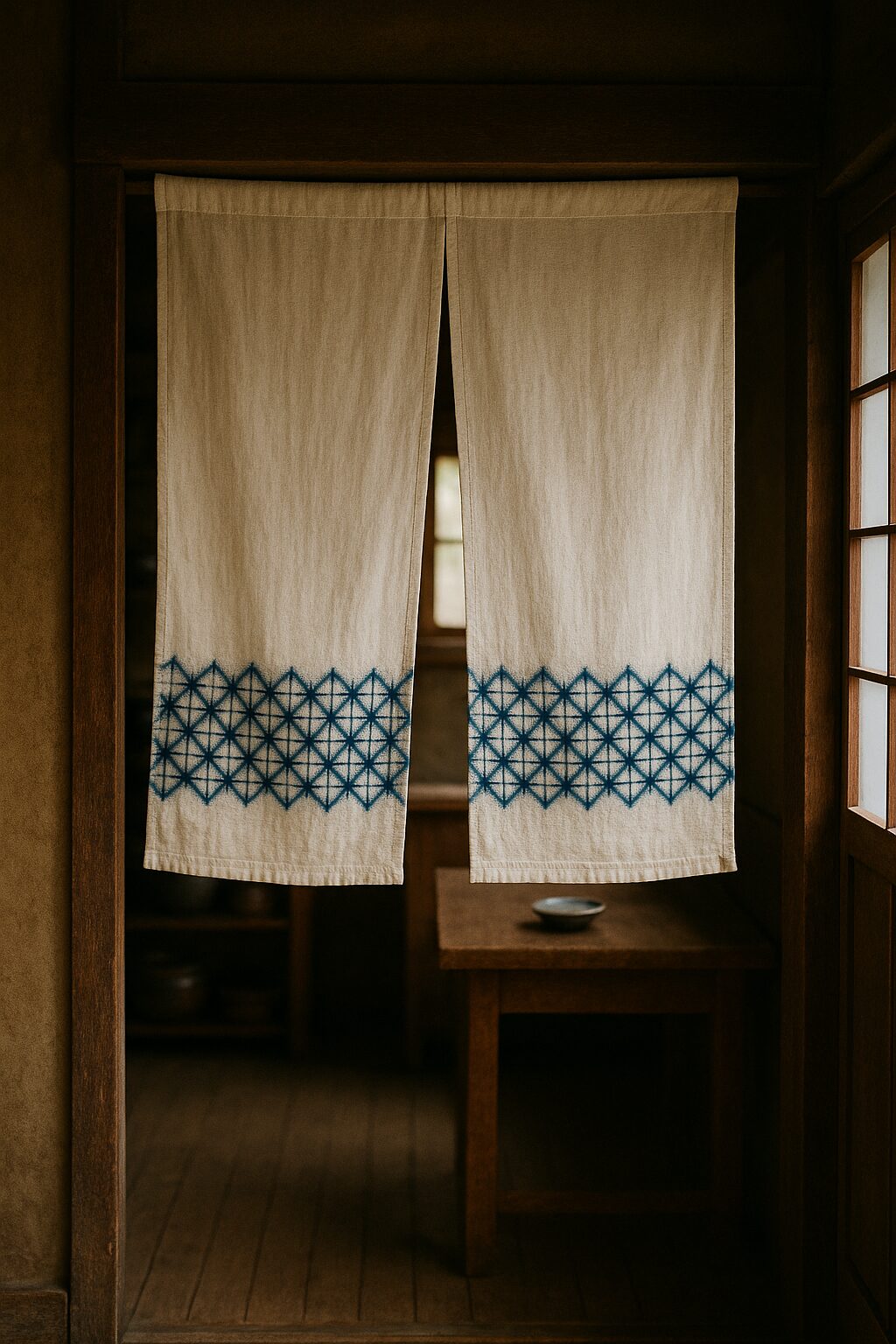By Kokoro Still
There is a pause when the hand reaches out —
not to open,
but to part something softer,
something hanging,
swaying slightly in the air.
The noren does not close the way a door does.
It moves.
It breathes.
And it remembers the hands that once lifted it.
What the Noren Leaves
The noren does not shut.
It neither seals nor exposes.
Found in kitchens, bathhouses, or small storefronts,
the noren suggests a pause, not a barrier.
It tells you, “There is something behind this,”
but never insists on showing.
Not a warning,
but a gentle cue —
an entrance softened by time,
where presence is felt,
but never forced.
A Memory in the Kitchen Breeze
There was a noren hanging at the entrance to the kitchen.
White cotton. Indigo print.
Faded with time and touch.
I used to lift it gently —
sometimes with wet hands after playing outside.
She didn’t say anything.
But when I stepped in,
she turned slightly —
just enough to meet my eyes.
A faint smile.
Then, she turned back to what she was doing.
A small dish had already been placed
on the wooden surface beside her hands —
a quiet space near the edge of the kitchen,
where things were always left without words.
The noren settled behind me.
And everything felt just as it always did.
A Threshold that Breathes
The noren is not a wall,
nor a line to be crossed.
It does not keep outside and inside apart.
It lets them mingle —
light and shade,
sound and hush,
arrival and rest.
When you part the noren,
you are not simply entering a space.
You are entering a stillness
that had already opened itself to you.
What the Noren Leaves Unsaid
The noren does not shut.
It sways back into place,
without sound or latch,
leaving only the stillness of what passed through.
But in that stillness,
we feel something:
the trace of hands,
the shift of light,
the presence that preceded us.
Not all thresholds need to shut.
Some remain open,
soft,
and quietly remembered.
Featured image: The image was created by AI (ChatGPT)



Comments